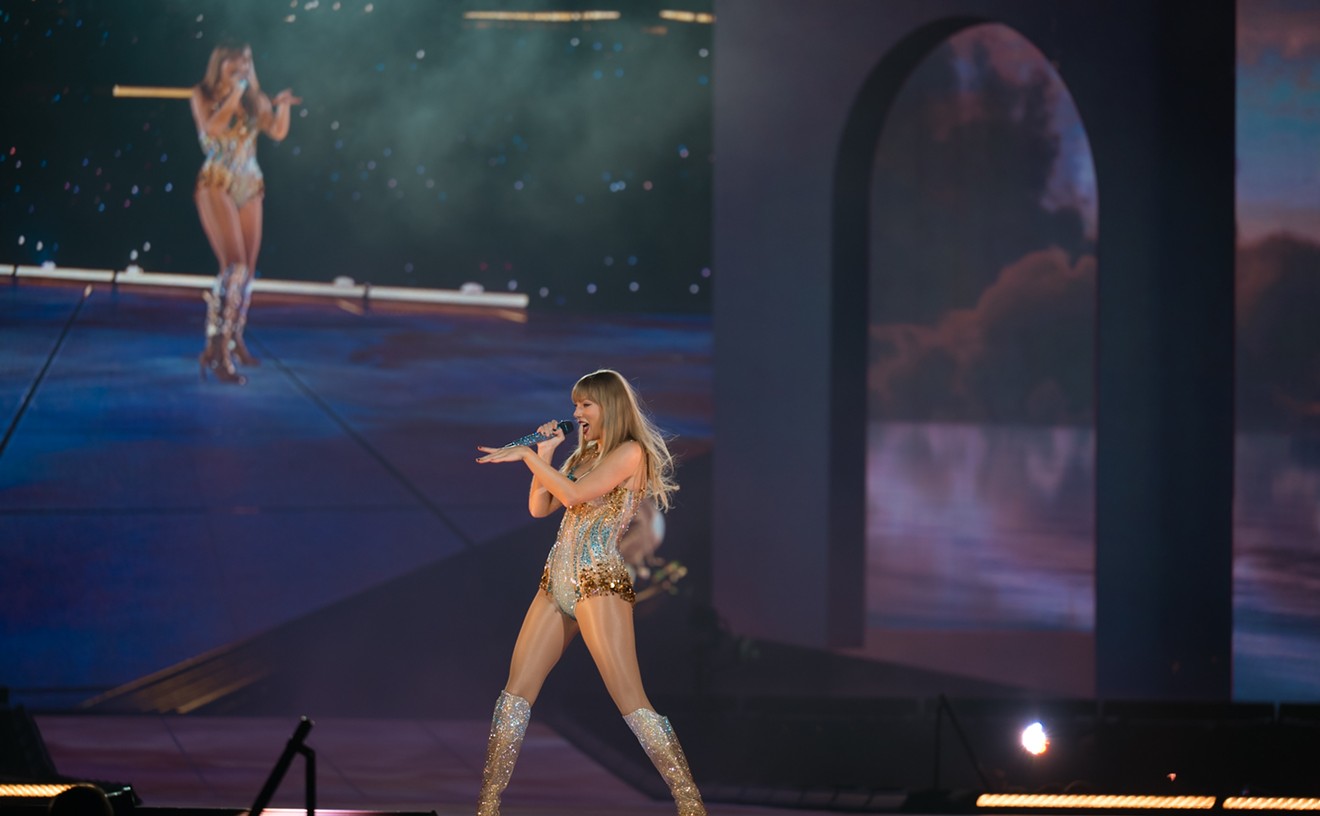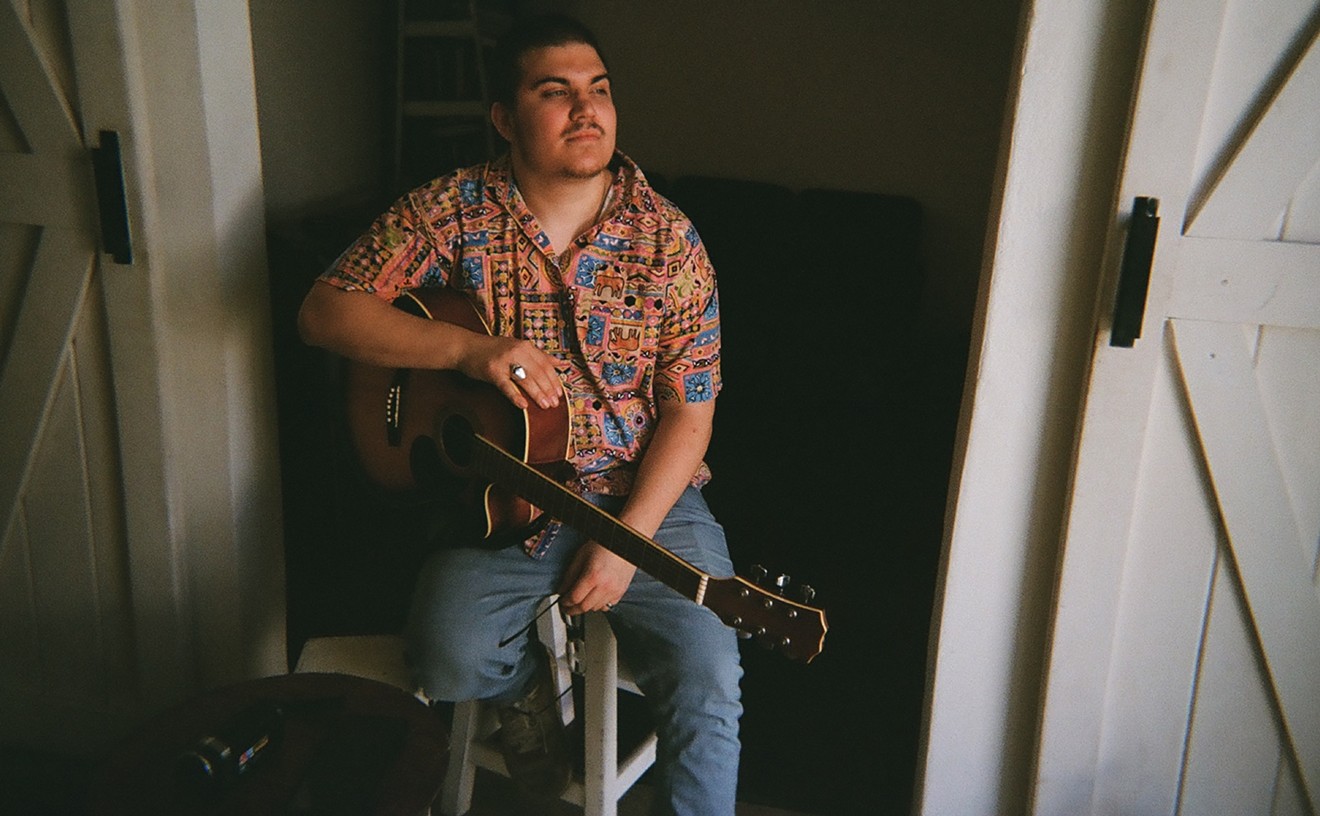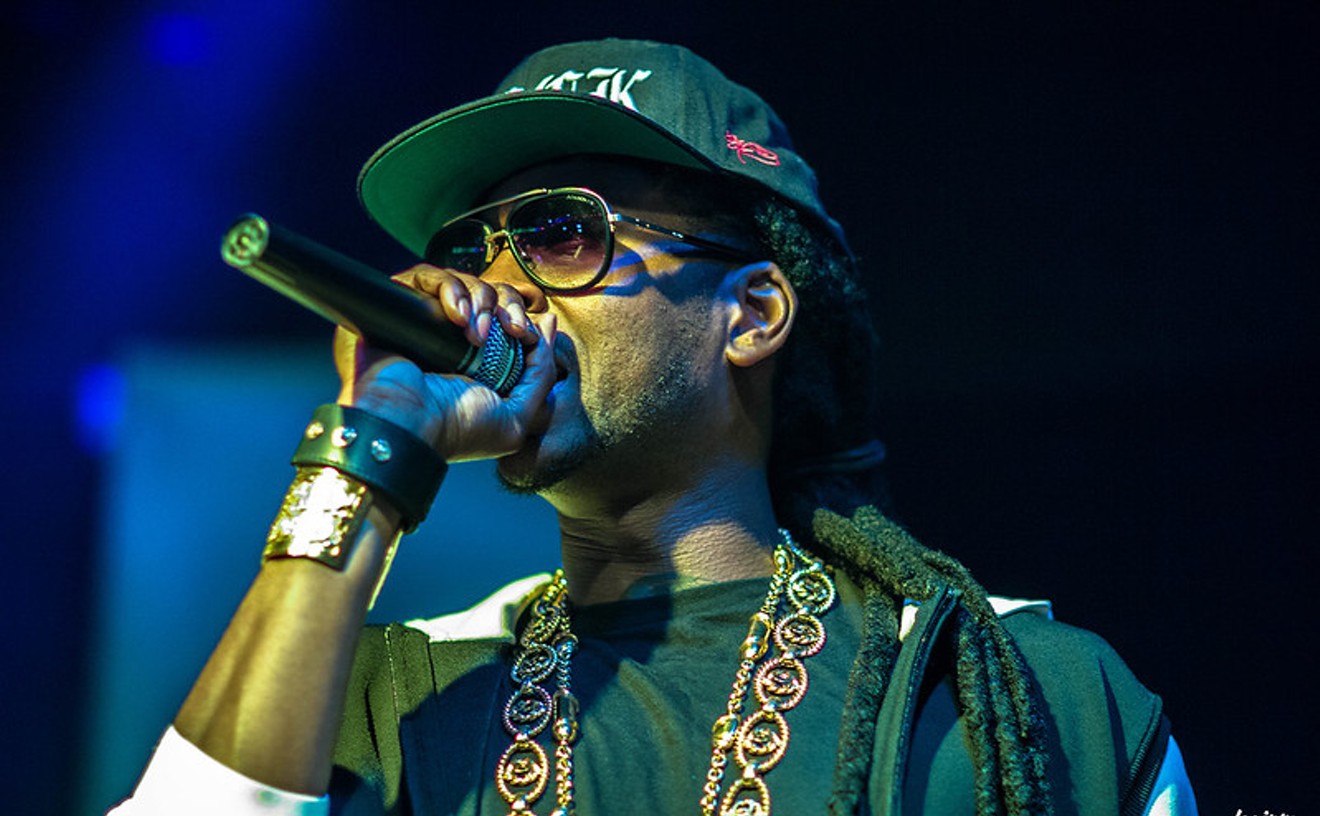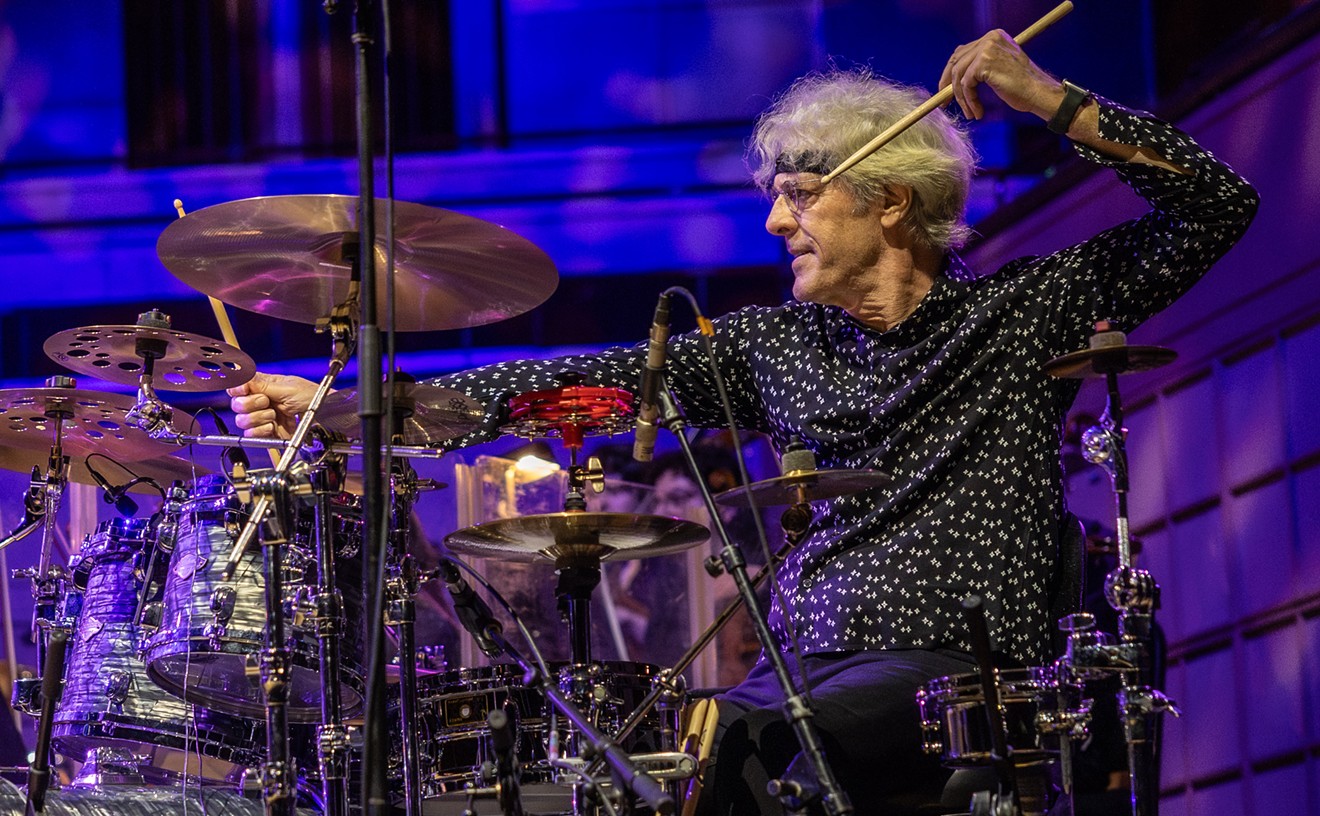The American Woodman Hall saw the molding of a host of now-famed local talent, from saxmen like Marchel Ivery (tenor), Eugene "Worm" Halton (alto then, although he plays tenor now), guitarists such as Nappy Chin, Roger Boykin, and Donnie Gililland, and others, often with the help of already established names like David "Fathead" Newman, James Clay, Billy Harper (all tenor saxophone; Fathead also plays flute and alto), and Al Dupree (piano). It was our own golden age of jazz, initiated almost by chance, ushered out by deep changes that those affected couldn't even begin to see--let alone fully comprehend--and it's the subject of a retrospective and reunion sponsored by the Sammons Center for the Performing Arts' Sammons Jazz program, scheduled for Wednesday, September 3.
The American Woodmen started out as a fraternal organization headquartered in Denver, Colorado. Designed at first to foster fellowship (arguably like the pleasure and social clubs of New Orleans), it later used the advantages of massed membership to provide insurance benefits much like Texas' own Sons of Hermann. Like the Sons of Hermann Hall that now sits at the east end of Deep Ellum, the Woodman Hall provided the various lodges--in this case called "camps"--an opportunity to make a little money on the side through the rental of the hall when it wasn't needed for official business.
The building was still relatively new in September 1957 when Billy Burke, the first black sales rep hired by the American Tobacco Company south of the Mason-Dixon line, and Tony Davis, publisher and founder of In Sepia--now the The Dallas Weekly--came together. The pair joined an entrepreneurial spirit (primarily Davis, whom Burke calls "the greatest promoter Dallas has ever seen") with love of music (principally Burke, who calls the music room in his North Dallas home--shelves full of jazz CDs and cassettes, walls covered with pictures--"my heaven").
"It was a whim, really," recalls Burke today. "In Houston, there was this place called the Ebony Club that hosted a jam session, and we were talking about it. I thought it was something that we'd plan and eventually do, but the next night Tony came by in his car and said, 'Ride with me.'" The two ended up at the Woodman, which was fairly new and without any renters for the space on Sunday afternoons. To Burke's surprise, Davis immediately began asking questions about price and availability; almost before Burke knew it, the pair had engaged the hall for half a year, from 3 p.m. to 7 p.m., for $35 an afternoon.
At the same time, the Red Tops--built around a musically inclined core of neighborhood kids Worm Halton, Bobby Saunders, and Claude Johnson--were inching their own way toward the venue. "When we started out, we were just fooling around," Halton remembers. "We started out on Bobby's front porch, then we moved up to little places where we'd just play for barbecue sandwiches. Then Howard Lewis and John Henry Branch got ahold of us, and they'd start sending us out on little jobs." The group moved up to hotels and venues like the Empire Room and backing up traveling acts such as Ruth Brown. At the same time, they attracted other like-minded older kids such as trumpeter Willie T. Albert and guitarist Roger Boykin. When the Woodman needed a band, the Red Tops (by then led by Albert) were ready, coming aboard as the house group.
The afternoon show caught on almost instantly. "Within a month," Burke says, "word of mouth had spread so far that it was standing room only every Sunday." At first admission to the hall--which could hold around 300 souls--was one dollar; a table was another 50 cents; the Red Tops made $64 (roughly $8 a man) for the afternoon. You brought in your own booze and bought soda and buckets of ice, and if you didn't have any food to take in, the hall had a kitchen. "I can still hear Johnny Shields [the MC] saying, 'Don't forget--we got chicken in the basket for 65 cents,'" Burke recalls with a chuckle.
Segregation had black Dallas confined to the south side of town; many patrons lived within walking distance, and few were farther away than a short drive, bus trip, or taxi ride. The afternoon soon assumed a central role in the life of the community. "People dressed up," says Boykin, who joined the band shortly before they started playing at the Woodman. "It was a big party and a fashion show, too, because people were dressed up, to the nines. It was right after church. It was very festive, like a dress-up picnic indoors."
For whites back then, jazz was the domain of the hep; for the black community, things weren't quite so rarefied. "Most of the music black people were listening to then was blues-oriented," Boykin explains. "But jazz is much more blues-derived--and the styles more akin--than most people think. People were in much closer contact with the jazz being played than the young people of today would be. Jazz and pop music are so far apart today--just look at rap--but back then the line was not so distinct. Take Dinah Washington, who today is considered a great jazz singer. Back then, she was on the radio every day, along with people like Gene Ammons and Jimmy Smith. So jazz was not so far above the heads of the people coming into the hall.
"You see, back then the musical groove was a swing groove," Boykin says. "The blues shuffles or even the twist, B.B. King, and Chuck Berry--all that music was 4/4 [time signature] based, so even if people didn't really understand the music, they could relate to the beat; they could still party, still shake their booties and snap their fingers." Even the deconstructions of hard bop had a place. "Worm [Halton] was the John Coltrane of Dallas," Burke remembers. "He was all over the place, doing all kinds of stuff--blurrabiddabiddabapapap--and some people would be going, 'What in the hell is he playing?'"
An entire generation of musical talent was being raised. "One of the most interesting points about the whole thing was that most of us up there on that bandstand were less than 20 years old, really the young lions of that day," Boykin says. Boykin and Johnson were but 17 and 18 respectively; James Clay, a grizzled vet at 22. "Clay had been to L.A. and made a couple of albums," Boykin continues. "His playing had advanced past ours, and he was pretty well thought of nationally. He came home when his grandmother got sick and just stayed; Willie T. Albert was the bandleader, but without a doubt Clay was our inspirational leader and the person we all learned from."
More experienced musicians were constantly sitting in, teaching and sharing what they knew. When Fathead Newman took a break from Ray Charles' band, Sunday afternoons frequently found him at the Woodman. The great Billy Harper--legendary tenor man and the actual author of Count Basie's "One O'Clock Jump"--was often there. Ben Martin and Dewey Redman might drive over from Fort Worth, or Austin's Fred Smith come up. Ronald Shannon Jackson sat in; his nickname, according to Boykin, was "Roundhouse." It was a scene positively crawling with creativity and growth.
"James Clay could play flute, so three other members learned," Boykin remembers. "All of these guys could read music and play by ear with equal facility, and several of us--myself, Claude, Red King, and Henderson Jordan--became first-class arrangers, also. During the week we'd break up into two or three groups--I had my trio, Clay his quartet--but on Sundays we'd all come together as the Red Tops; it was our workshop, our lab band."
As word of the creative heat being generated grew, other musicians began to check out the scene, and the lines of influence and interconnection spread. White kids from Denton (home to what was then North Texas State University--now the University of North Texas--and its famous jazz program) such as Donnie Gililland and Jack Petersen started showing up to play within a year, and white faces began popping up in the audience. Dude Kahn--another paleface--often played the trap set against A.D. Washington or Thomas McGee's congas. The influences worked both ways: Kids from Denton encouraged the neighborhood musicians to attend NTSU. Yet even in Dallas--one of the most segregated of the major American cities--there was little or no tension between the races. In fact, there was little or no tension, period. "I don't recall a single fight," Boykin says after a memory-scanning silence, a point on which Burke concurs.
"We had white, we had black, we had every kind of musician there, from all across Texas," he says. "Everybody got along fine. It was just a wonderful time and an education for everybody."
"It was a whole new world. I don't want to get maudlin about it," says Gililland, who went on to play with local mainstay Joe Johnson, "but it was always friendly faces, people happy to see me. It seems to me a time of great hospitality and innocence; there were times when I was the only white face around for miles, but I never felt like it. I could walk up and down Oakland with my guitar. My fondest memories are of going over and they'd get me on the bandstand with Clarence "Nappy Chin" Evans [so named because of his goatee]--I was 17, 18 years old--and we'd trade off parts; they called it 'cuttin' head.' I was totally flattered. I don't know if I held my own or not--probably not--but they were very protective of me and generous with their musical knowledge."
"It was the biggest event in the community and the hippest session around," Boykin says. "Lots of people were there simply because it was the place to be--damn the music."
The Woodman scene flourished like a hothouse flower for almost five years; then, slowly--almost imperceptibly at first--the fire began to burn down. For one thing, the foundations of pop music were shifting. "In the early '60s, the beat started to change." Boykin maintains. "That swing-based 4/4 groove changed to an 8/8, eighth-note based thing with artists like the Beatles, James Brown, and Motown." Desegregation eliminated the constraints on a concentrated black community.
"In 1960, my family--we used to live right there at the corner of Oakland and Tanner--moved to Oak Cliff," Boykin says. "As the city opened up, and better-paying jobs and living conditions became available, a lot of other black families did the same. All of a sudden, you had to drive across town to get [to the Woodman]." As the community expanded, becoming less close, other distractions loomed.
"All of a sudden," Burke recalls, "people went wild for football, and our attendance started to drop."
"When the Dallas Cowboys started winning," Boykin agrees, "that ruined it, because football became the Sunday thing. [The sessions] lost the glow." As more affluent families moved up and out of the 'hood, rougher, less fortunate people moved in to take their place, and the texture of the Woodman's surroundings started to change. Burke and Davis tried to fight football (and, not incidentally, TV) by moving the starting time of the session--first back to 4:30 p.m. in 1968, and then later on into the evening. It only delayed the inevitable, and the two creators bowed out not long thereafter. Liquor by the drink--passed in December 1970--reduced the appeal of bringing in your own bottle and paying for set-ups.
"Different promoters tried to keep it going," Boykin says. "But they could never get the crowds happening again; at the time, nobody knew why." By 1972, the sessions at the Woodman were a thing of the past, swept away by an almost-tidal wave of social change.
But the effects of those after-church jams were apparent even as the feasibility of staging them waned. Ray Charles routinely harvested Woodman talent, including Claude Johnson and Saul Samuels (who also went on to play with Louis Jordan). James Clay's influence on Texas saxophone is huge; Fathead Newman and Marchel Ivery's, still growing. Donnie Gililland went on to play with the late, great vibe man Ed Hagen--among many others--and still can be heard around town. Al Dupree--who played with the Woodmen some in the beginning--is a local institution, and Red King lives and plays in San Francisco.
But the race runs ever on, and time always wins. Nappy Chin is rumored to have died in prison long ago; James Clay, Bobby Saunders, and James Fisher all are more certifiably deceased. Names, dates, and faces slide further and further into the fog, and as they do it becomes more important to summon up the spirit of that golden moment, a spirit that almost all agree the city needs badly, perhaps now more than ever. The weight of the intervening 40 years doesn't hang too kindly.
"It's a nostalgia trip," Boykin says frankly and without apology. Billy Burke is going to be guest MC and historian; Willie T. Albert will be there to play trumpet and lead the band. Worm Halton and Claude Johnson will be there, and Charles Scott will play bass. A.D. Washington will once more man his congas while Dude Kahn drums. Donnie Gililland plans to attend, and Betty Green may sing (the Woodman hosted some stellar vocalists, including Green, Florrie Ann Price, and their longest-running singer, Billy Brooks). Other guests are expected to turn up. The first hour or so of the Sammons show--don't forget, there are few spots to see jazz in this town finer than the Sammons Center--will be instrumental, and the last quarter-hour will be an all-attending-Woodmen jam.
"It's going to be the same type of material we did then," Boykin says. "We encourage all the old heads to come on down and celebrate the 40th anniversary of the start of it. Those who've only heard about it--from their parents or grandparents being there--can come down and see what it was all about."
Which brings us back rather neatly to the spirit thing, that moment--still shining--that Billy Burke remembers as "beautiful...a haven," born out of the will to create and the fellowship that engenders, a bond that can cross almost any barrier.
"Music and musicians have always led the way as far as racial harmony goes," Boykin says before ringing off. "Music is the universal language, every bit as much as humor. People laugh the same, in every country. Music works the same way.










